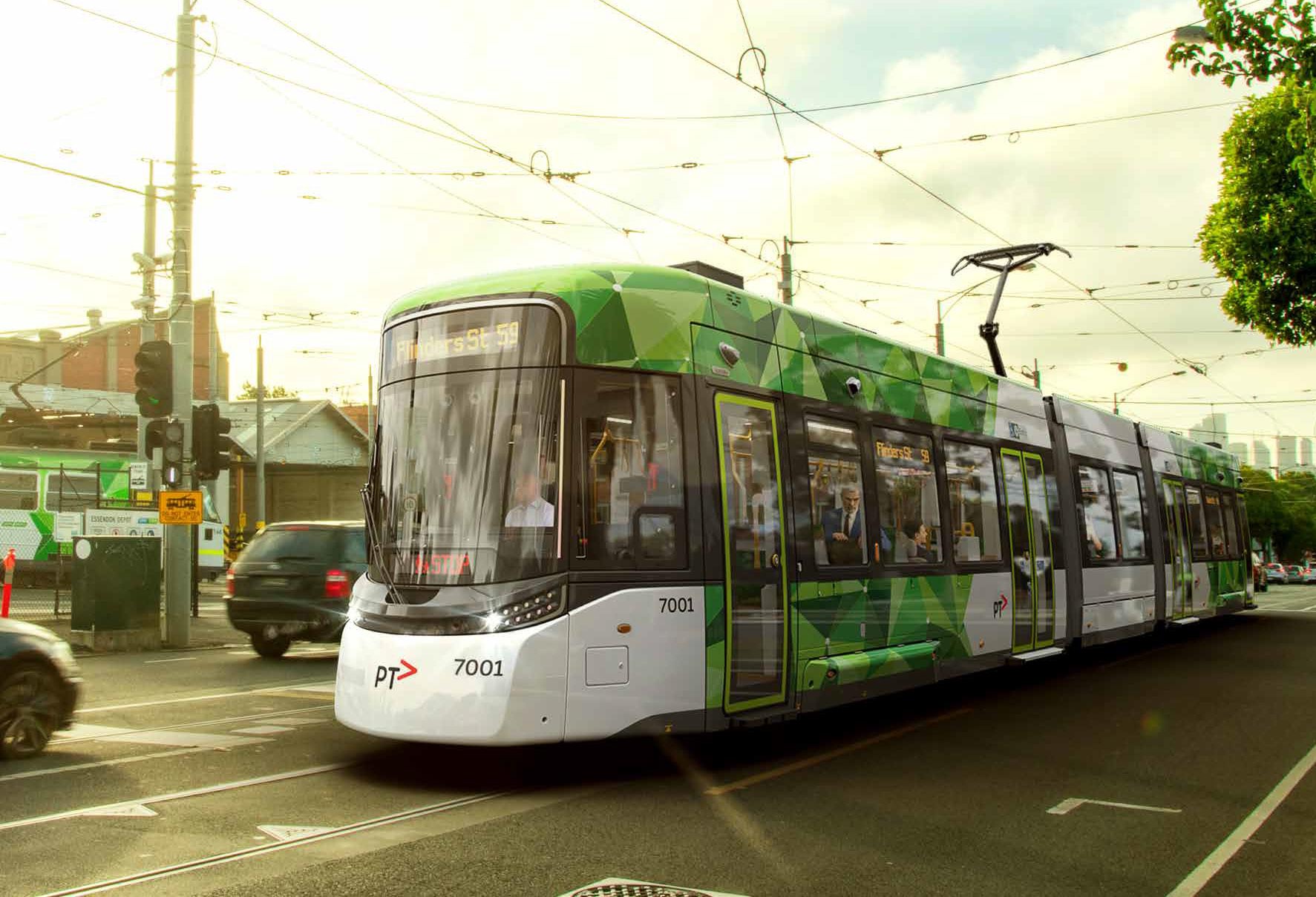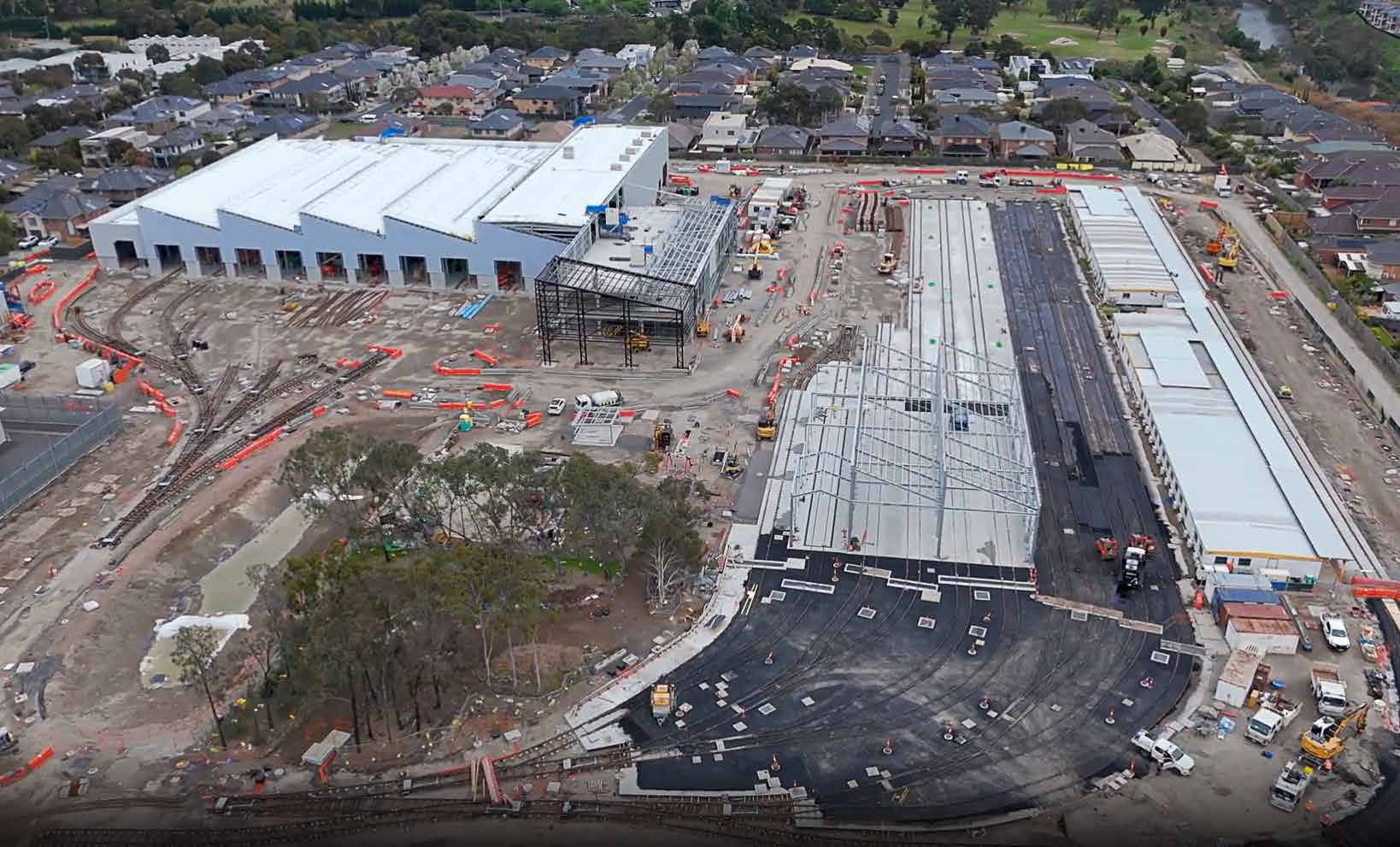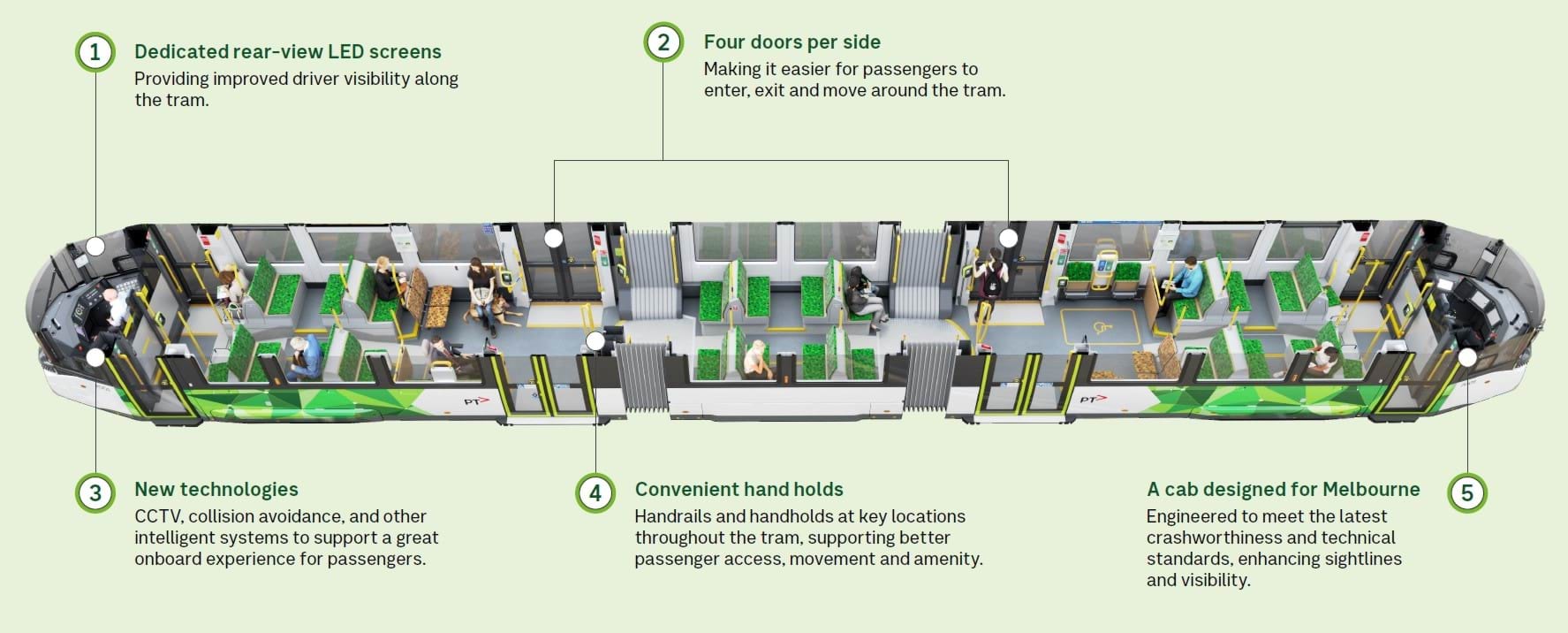The Victorian Government is investing $1.85 billion in 100 Next Generation Trams (NGTs) and a new tram maintenance and stabling facility in Melbourne’s west.
The Next Generation Trams will be the largest investment in locally made trams in Australia’s history, setting the standard for modern public transport by delivering a more comfortable, accessible, and energy-efficient journey for passengers.

This Victorian-made tram was designed in collaboration with approximately 1000 passenger, accessibility, and tram operations representatives.
Melbourne’s newest tram depot is under development in Maidstone, set for completion in 2025 to house the G Class fleet.
The first routes to receive the new G Class trams include the 57, 59 and 82 in Melbourne’s west.
G Class highlights
The G Class tram’s design has been refined in collaboration with more than 1000 passengers, accessibility stakeholders, tram drivers, and technical experts.
- Space for up to 150 passengers
- Dedicated priority seats and mobility aid spaces
- Enhanced accessibility
- Hearing loops
- New priority seat design
- Improved reliability and energy efficiency
Benefits of the new design
Discover how the new G Class tram improves comfort, access and safety for all passengers, with better accessibility and energy efficient features designed for Melbourne's future.
Local jobs
The G Class is the largest investment in locally made trams in Australia’s history.
The project includes a minimum 65 per cent local content requirement, supporting up to 1900 local jobs.
The new trams are being manufactured at Alstom’s Dandenong facility, where more than 500 Melbourne trams have been built over the past 50 years.
Part of the plan
The new G Class tram is a key part of making our tram network more accessible, as outlined in Melbourne’s Tram Plan, and complements the coordinated program of more accessible tram stop upgrades over coming years.
Everyone should be able to catch the tram, and our new G Class has been designed with better accessibility at its heart.
Designed for everyone
Co-designed with Melburnians, the G Class meets the needs of passengers, drivers and other road users.
We took a human-centred design approach, to enhance the experience and ensure the tram is accessible and user-friendly.
A genuine co-design process
The tram’s design has been refined in collaboration with approximately 1000 passengers, accessibility stakeholders, tram drivers, and technical experts.
Energy efficiency
Onboard energy storage system to reduce power use and capture energy generated when braking, helping to reduce the need for expensive upgrades to the network’s power supply system.
The G Class will use 40 per cent less energy per passenger than other trams.
Renewing our fleet
The new trams will enable the retirement of some of our longest-serving high-floor trams from the Z and A classes, helping to make our public transport network more accessible.
Proven and future-forward
The new tram is based on Alstom’s Flexity 2 design, customised for the unique needs of Melbourne. Flexity 2 trams are used in cities across the world including Blackpool, Basel and the Gold Coast.
The modular design means there’s potential to add extra sections, making these trams longer to meet forecast passenger growth.
The new Maidstone tram maintenance facility
As a part of the Next Generation Trams Project, a brand new tram maintenance and stabling facility is being built in Melbourne’s west.
As a part of the Next Generation Trams Project, a brand new tram maintenance and stabling facility is being built in Melbourne’s west.

Overview
Tram stabling is where trams are parked while not in operation. The new facility will maintain, clean and store the state’s newest tram fleet.
The project has also built a short section of non-passenger tram track to connect the facility with Route 82 and the wider network, along Hampstead and Williamson roads. Trams will access the facility from Hampstead Road.
The Maidstone facility:
- is located on a 6.5-hectare site at Maidstone, near routes 57 and 82
- will maintain and stable G Class trams and support local jobs in Melbourne’s west
- includes undercover maintenance tracks, stabling roads, an undercover stabling and sanding area, a tram wash and a test track.
